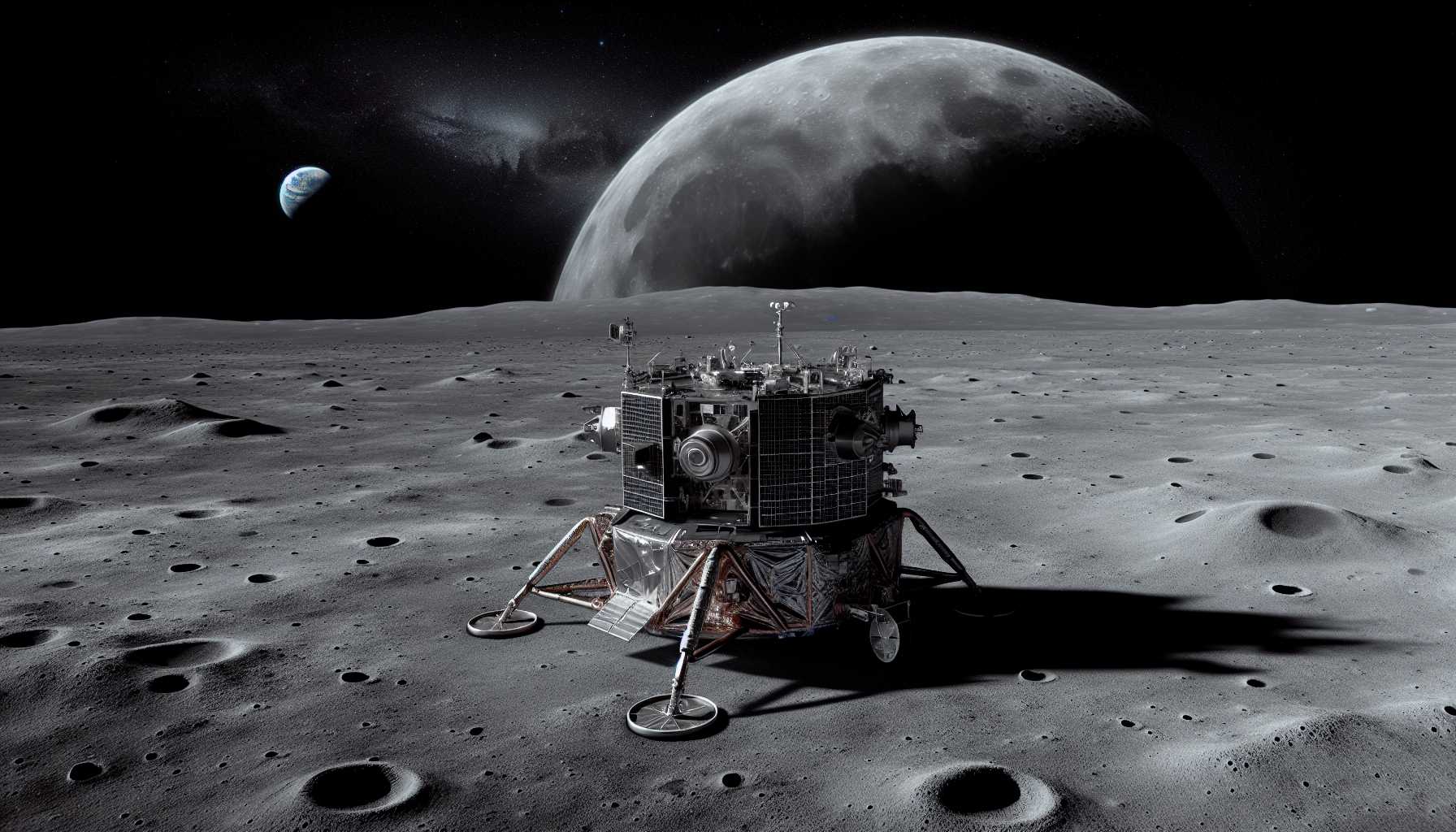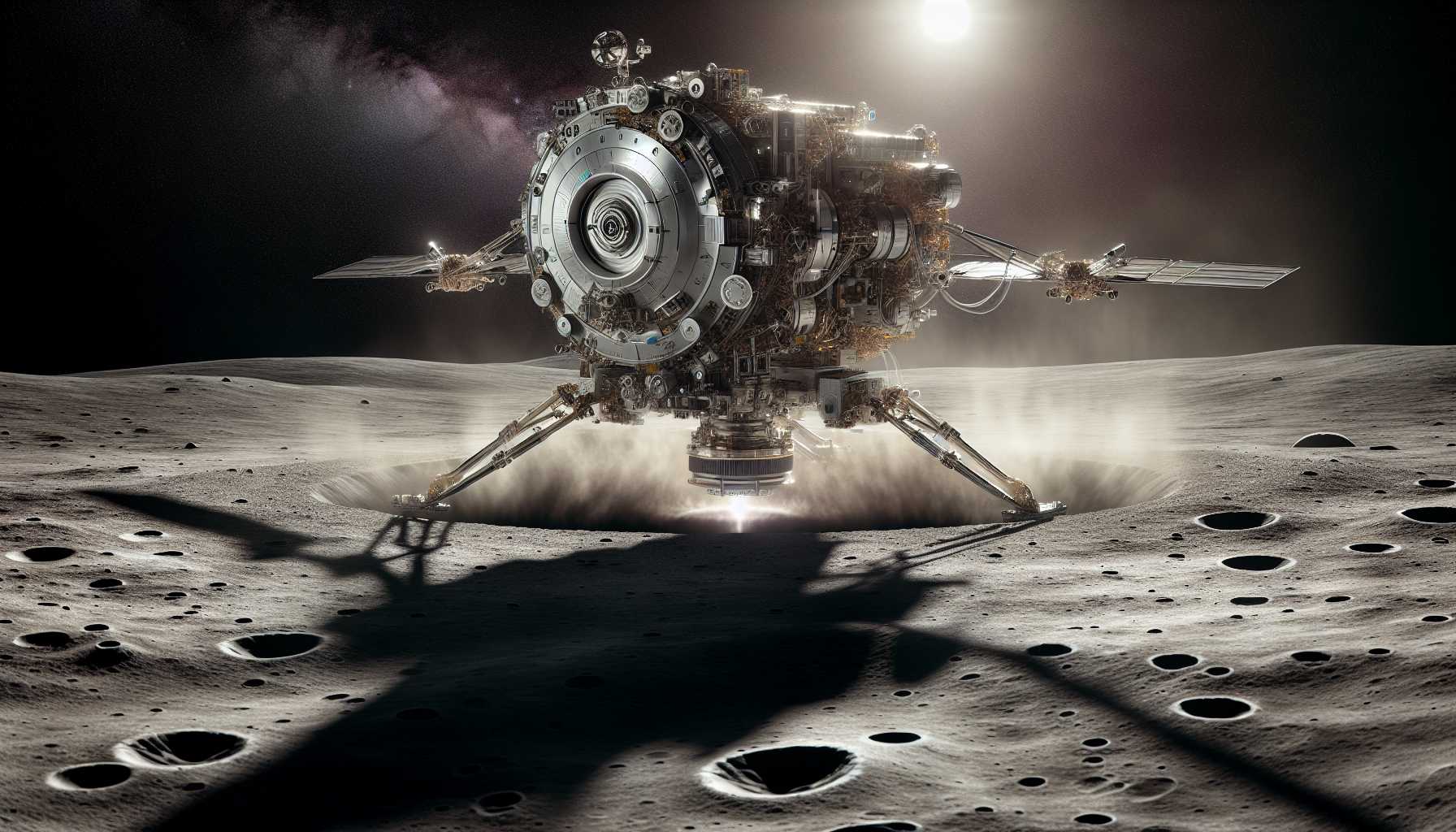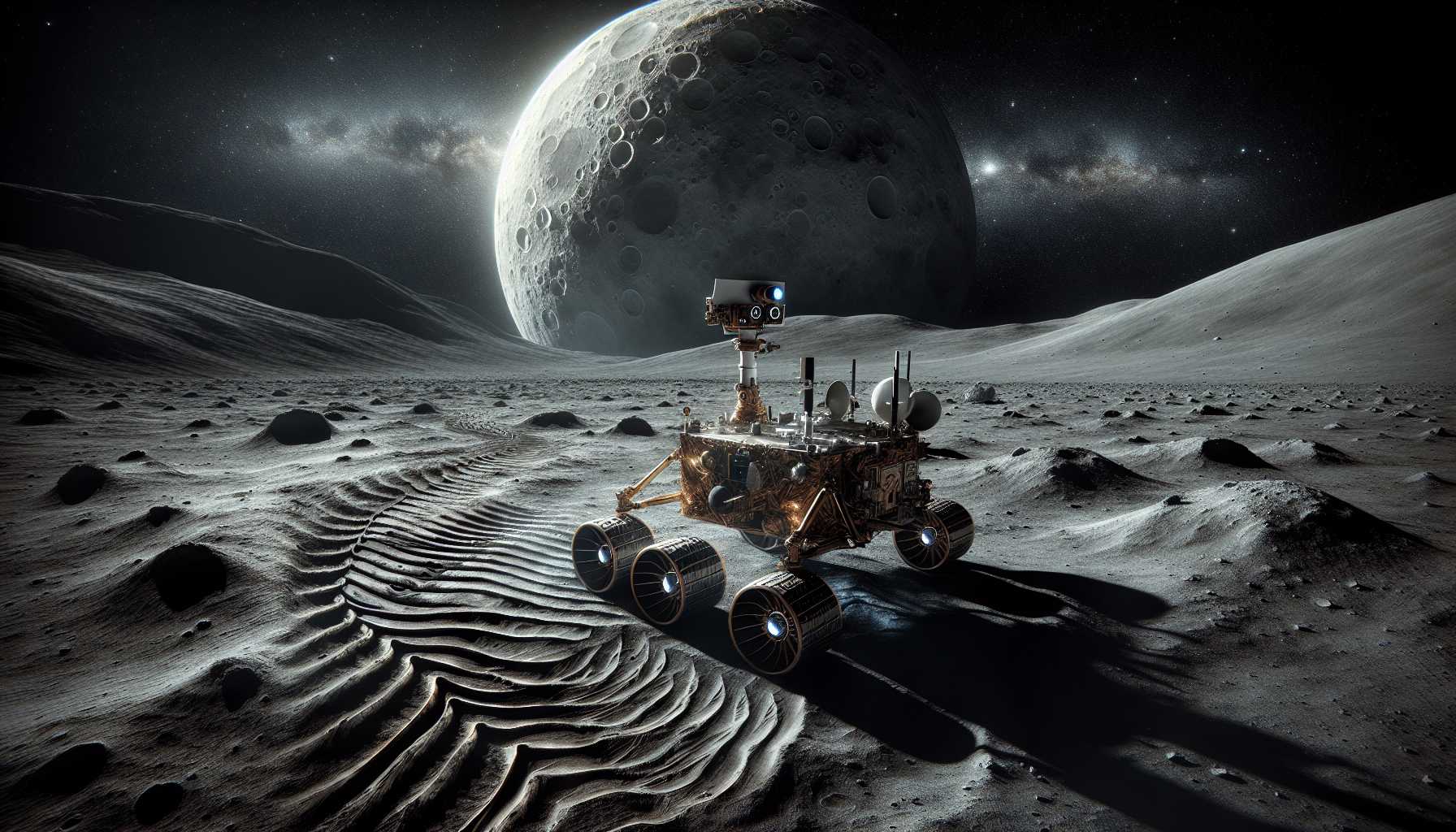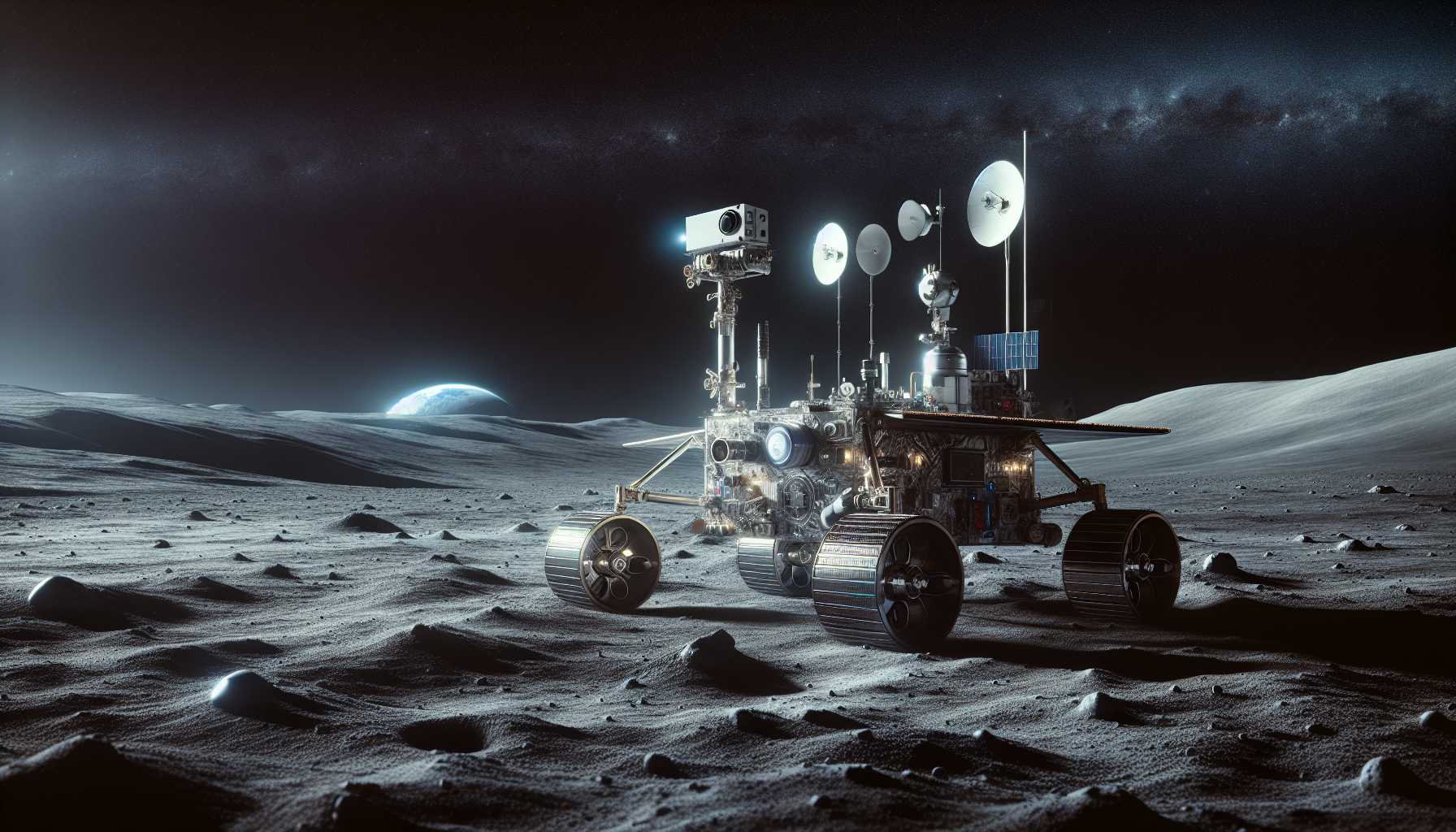 In the grand narrative of human endeavors to conquer the lunar wasteland, Japan’s latest lunar escapade reads like an epic tale with a twist—quite literally, upside down. Sci-fi enthusiasts and space aficionados, firm up your geeky senses because this isn’t your everyday space saga. As someone who feasts on technological triumphs and chases the thrills of space exploration, I couldn’t help but dive headfirst into unraveling the story behind Japan Aerospace Exploration Agency’s (JAXA) lunar anomaly.
In the grand narrative of human endeavors to conquer the lunar wasteland, Japan’s latest lunar escapade reads like an epic tale with a twist—quite literally, upside down. Sci-fi enthusiasts and space aficionados, firm up your geeky senses because this isn’t your everyday space saga. As someone who feasts on technological triumphs and chases the thrills of space exploration, I couldn’t help but dive headfirst into unraveling the story behind Japan Aerospace Exploration Agency’s (JAXA) lunar anomaly.
Precision that Paved Way for Peculiarity
 Imagine sticking the landing with the deftness of an Olympic gymnast, only to end up staring at the moon’s gritty ceiling floor—the irony isn’t lost on us. JAXA’s Smart Lander for Investigating the Moon, fondly acronymed SLIM, had one job: to demonstrate “pinpoint landing” chops that would make even the GPS gods blush. Commandeering a spot-on landing less than 11 yards of the mark, SLIM affirmed Japan’s venerated position as the fifth moon-walker nation among the galactic elites, trailing behind the former Soviet Union, United States, China, and India. Yet, in a somersault of fate, SLIM landed as no lander wishes to – upside down.
Imagine sticking the landing with the deftness of an Olympic gymnast, only to end up staring at the moon’s gritty ceiling floor—the irony isn’t lost on us. JAXA’s Smart Lander for Investigating the Moon, fondly acronymed SLIM, had one job: to demonstrate “pinpoint landing” chops that would make even the GPS gods blush. Commandeering a spot-on landing less than 11 yards of the mark, SLIM affirmed Japan’s venerated position as the fifth moon-walker nation among the galactic elites, trailing behind the former Soviet Union, United States, China, and India. Yet, in a somersault of fate, SLIM landed as no lander wishes to – upside down.
Technological Ingenuity in a Toy-sized Package
 Cue in the rovers, no bigger than a baseball, armed with a wizardry we owe to our childhood transformer boxsets. Takara Tomy’s role in their creation might flash a hint of quirky cross-industry collaboration, but under-detected is the nudge in the ribs to space exploration. Alas, as these rover-ettes rolled off pre-touchdown, their photographic prowess illuminated the plight of a golden ship, now a celestial headstand act. The spacecraft’s solar panels, a lifeline meant to soak in the sun, were left yearning for rays at the wrong angle. Droves of energy-focused discussions will ensue, but the message clings to the spine of every solar tech fanatic—orientation is everything.
Cue in the rovers, no bigger than a baseball, armed with a wizardry we owe to our childhood transformer boxsets. Takara Tomy’s role in their creation might flash a hint of quirky cross-industry collaboration, but under-detected is the nudge in the ribs to space exploration. Alas, as these rover-ettes rolled off pre-touchdown, their photographic prowess illuminated the plight of a golden ship, now a celestial headstand act. The spacecraft’s solar panels, a lifeline meant to soak in the sun, were left yearning for rays at the wrong angle. Droves of energy-focused discussions will ensue, but the message clings to the spine of every solar tech fanatic—orientation is everything.
Tick Tock, The Race Against Lunar Night
 As someone who thrives on crunching tech solutions before the eleventh hour, I feel the intense gaze of SLIM’s power conservation choice. A spacecraft, merely 2.5 hours post-landing, succumbing to a self-induced techno-slumber to save its soul – the plot thickens. With a ten-day lunar night threatening to envelop SLIM in a frostbite embrace, hope hinges on an angle shift of sunlight to jolt our sleeping beauty awake. Now, as a tech investor chomping at the bit for moonshots like this, I can’t help but wonder about the resilience designed into these systems. Forget not, space explorers, diligence in the face of dogged lunar extremities is not optional – it’s mission-critical.
As someone who thrives on crunching tech solutions before the eleventh hour, I feel the intense gaze of SLIM’s power conservation choice. A spacecraft, merely 2.5 hours post-landing, succumbing to a self-induced techno-slumber to save its soul – the plot thickens. With a ten-day lunar night threatening to envelop SLIM in a frostbite embrace, hope hinges on an angle shift of sunlight to jolt our sleeping beauty awake. Now, as a tech investor chomping at the bit for moonshots like this, I can’t help but wonder about the resilience designed into these systems. Forget not, space explorers, diligence in the face of dogged lunar extremities is not optional – it’s mission-critical.
An Ominous Glance at the Lunar Surface
 Gazes now turn to SLIM’s next-gen photo-matching technology meant to play Marco Polo with lunar surfaces. The promise of seconds-defining precision carries an air of sophistication for upcoming missions. However, the current topsy-turviness spawns questions about the algorithm’s ability to predict—and ultimately avoid—situations like the one we’re privy to now. JAXA’s current head-scratcher orbits around an engine that recoiled from thrusting duties moments before the constellation-worthy obstacle avoidance dance. Mystery abounds, and despite this hiccup, SLIM fortifies our belief that moon landings, akin to threading a needle wearing boxing gloves, remain daunting tasks no matter the decade you choose to embark on them.
Gazes now turn to SLIM’s next-gen photo-matching technology meant to play Marco Polo with lunar surfaces. The promise of seconds-defining precision carries an air of sophistication for upcoming missions. However, the current topsy-turviness spawns questions about the algorithm’s ability to predict—and ultimately avoid—situations like the one we’re privy to now. JAXA’s current head-scratcher orbits around an engine that recoiled from thrusting duties moments before the constellation-worthy obstacle avoidance dance. Mystery abounds, and despite this hiccup, SLIM fortifies our belief that moon landings, akin to threading a needle wearing boxing gloves, remain daunting tasks no matter the decade you choose to embark on them.
Lessons Learned, and The Unrelenting Cosmic Chase
As the moon’s diaphanous exosphere offers no drag, and no earthly GPS dare claims reign over lunar longitudes, the saga of SLIM etches yet another chapter in human lunar expeditions. Standing as a testimony that each hiccup adds a verse to our understanding, JAXA’s moon rover inadvertently sets the stage for annotating the rough draft of lunar exploration. In the penumbral shadow of the current events, one can’t help but postulate on the fresh wave of protocols, design calibrations, and hearty resilience that upcoming missions will cloak themselves in. To my fellow tech enthusiasts and space vanguards, there’s an overtone that, although SLIM sleeps, our lunar curiosity—and the technology that propels it—remains wide awake and restless for redemption. With the lunar clock ticking, and SLIM’s metal frame cradling rocks whimsically dubbed “Bulldog” and “Toy Poodle,” might I remind of a phrase etched in spacefaring lore: The best laid plans of rovers and men often go awry—on the moon as it is on Earth.





